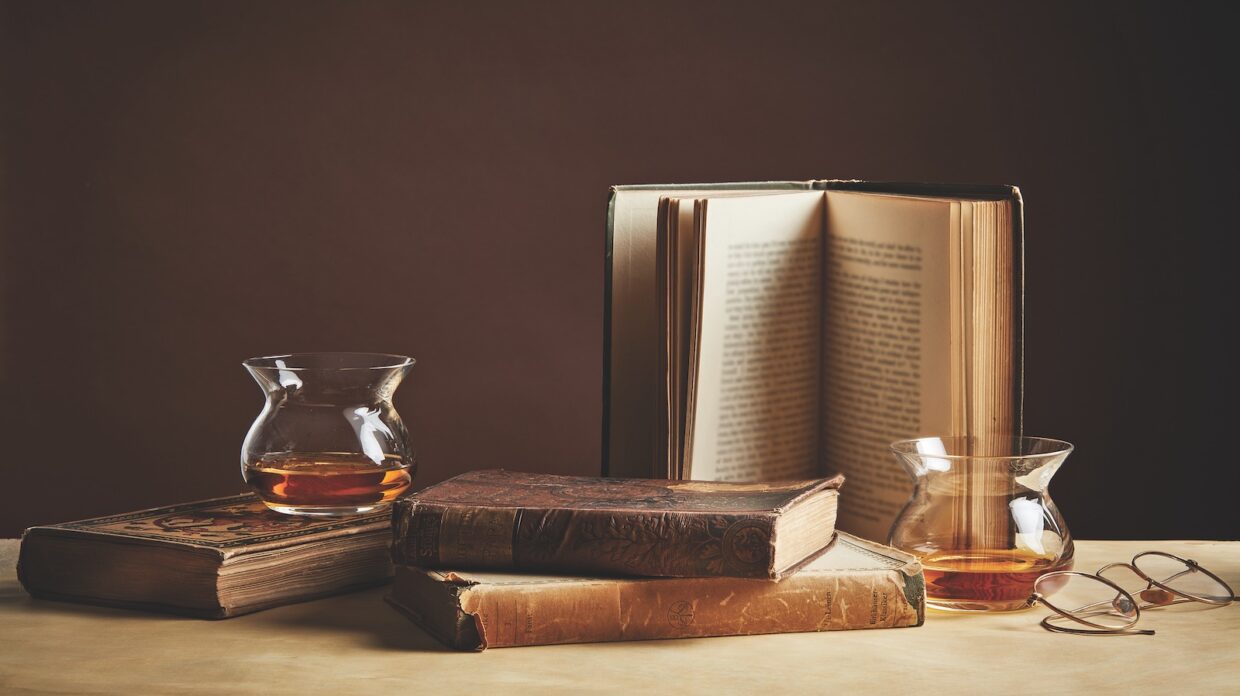
Many whisky lovers enjoy having their nose in a good book almost as much as a glass of whisky, and there are deeply evocative aromas common to both pleasures. The bouquet of some whiskies call to mind the antique scent of rows of books inside a library, in the cabinets of antiquarian book dealers, or along the miles of shelving stretching around enormous bookstores from Powell’s in Portland to the Strand in New York. Sales of print books rose during the pandemic as more people picked up a good read. (According to publishing industry tracker NPD Group, U.S. print book sales were up 8.2% in 2020 to 750 million books, while more than 200 million print books were sold in the UK last year—passing that mark for the first time since 2012, according to Nielsen BookScan.)
From a whisky nosing perspective, bookish aromas typically conjure up images of a gilt-edged tome bound in calfskin leather, perhaps with raised bands on the spine and archaic gold lettering, or a cloth-bound volume inside a slightly chipped dust jacket, its pages falling open to reveal gorgeous marbled endpapers, releasing the scents locked between the slightly tanned pages. Then again, other people like nothing better than cracking the spine on a freshly printed book or magazine and sniffing the modern chemicals in the paper, inks, and binding adhesives. So how can a whisky remind us of the smell of a good book?
The answer is right before you: paper in old books is made from wood pulp, which gradually decays over decades, releasing many of the same aromatic compounds found in oak casks. Scientists have even developed an odor wheel for describing and categorizing these old book smells, similar to whisky flavor wheels, deducing that the more prominent chemicals, such as vanillin, benzaldehyde, ethyl benzene, and the biscuit-like aroma of furfural come from the degradation of the wood compounds in the paper. Combined with the bindings and covering materials, they produce that curiously sweet mixture of vanilla, almond, dry leaves, and grassy notes, along with reassuring scents of polished antique bookcases, mustiness, and worn leather. To many, this attractive constellation is a signifier of a well-matured whisky.
Start your hunt with some of the less rambunctious single malt scotches and grain whiskies matured in second and third-fill bourbon barrels, move on to older single malt whiskies that rely on a contribution of refill sherry casks, and nose some bourbons and ryes to find those more mature leather, nut, and woody characteristics.
Whether your bookshelves are full of precious whiskies or pristine first editions, both have the power to transport you to other worlds.
Shelf Aware: These whiskies want to get into your good books
New Riff Backsetter Peated Backset Bottled in Bond Rye
Antiquarian Book: Old books, polished oak, sweet nuttiness
Kanosuke New Born
New Book: Peapod, bookbinding glue, Belgian chocolate
Deanston 12 year old
Leather Bound: Figs, polished calfskin covers, tobacco






